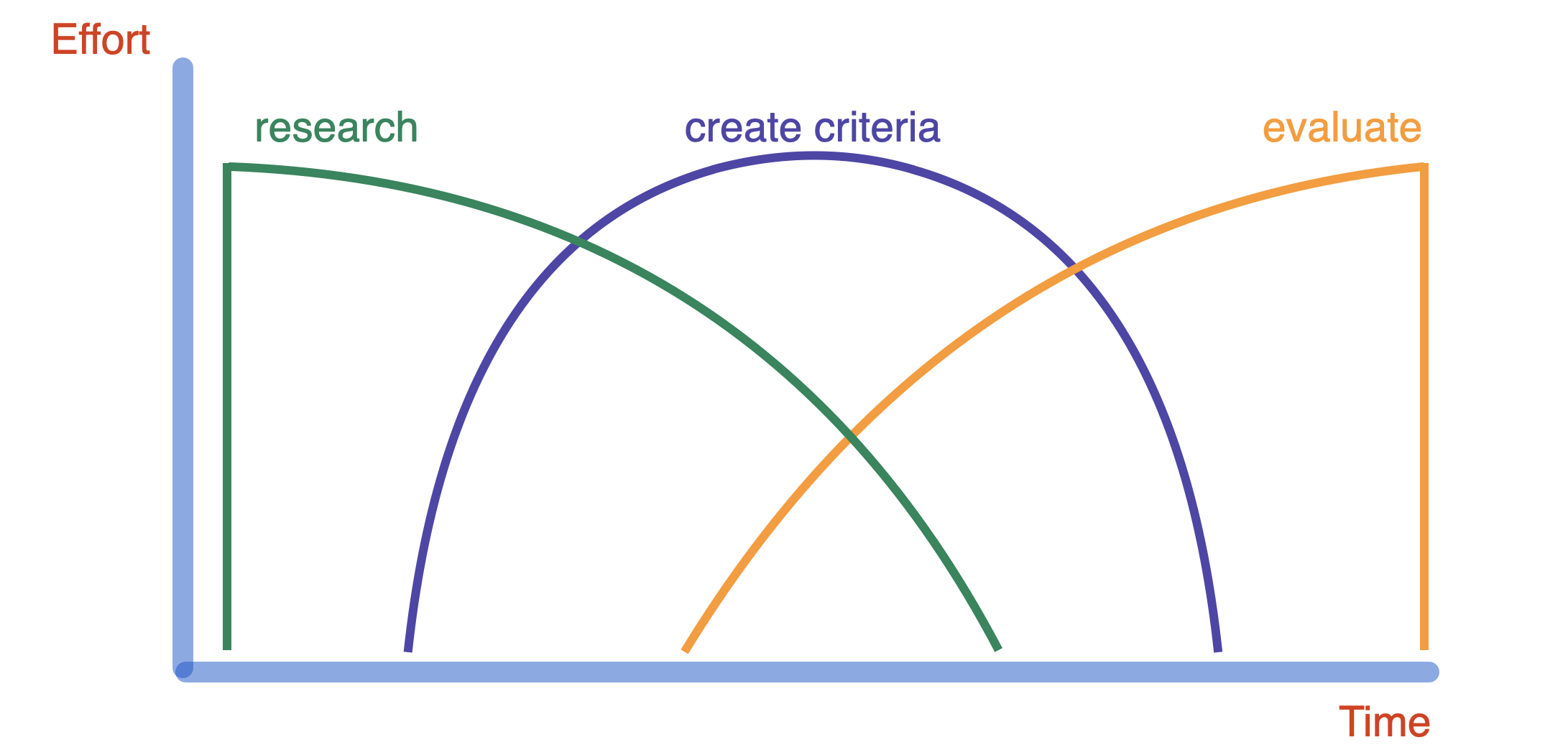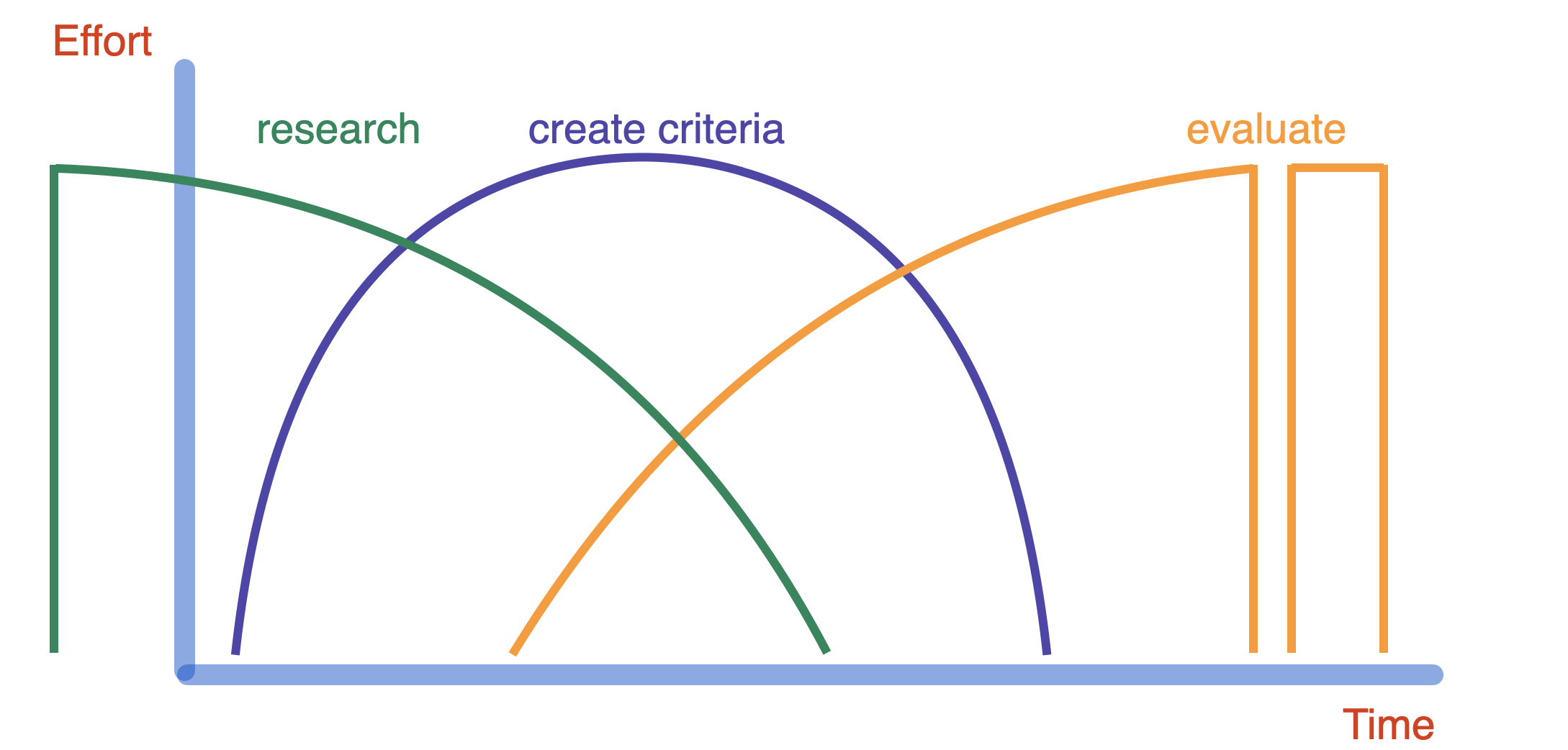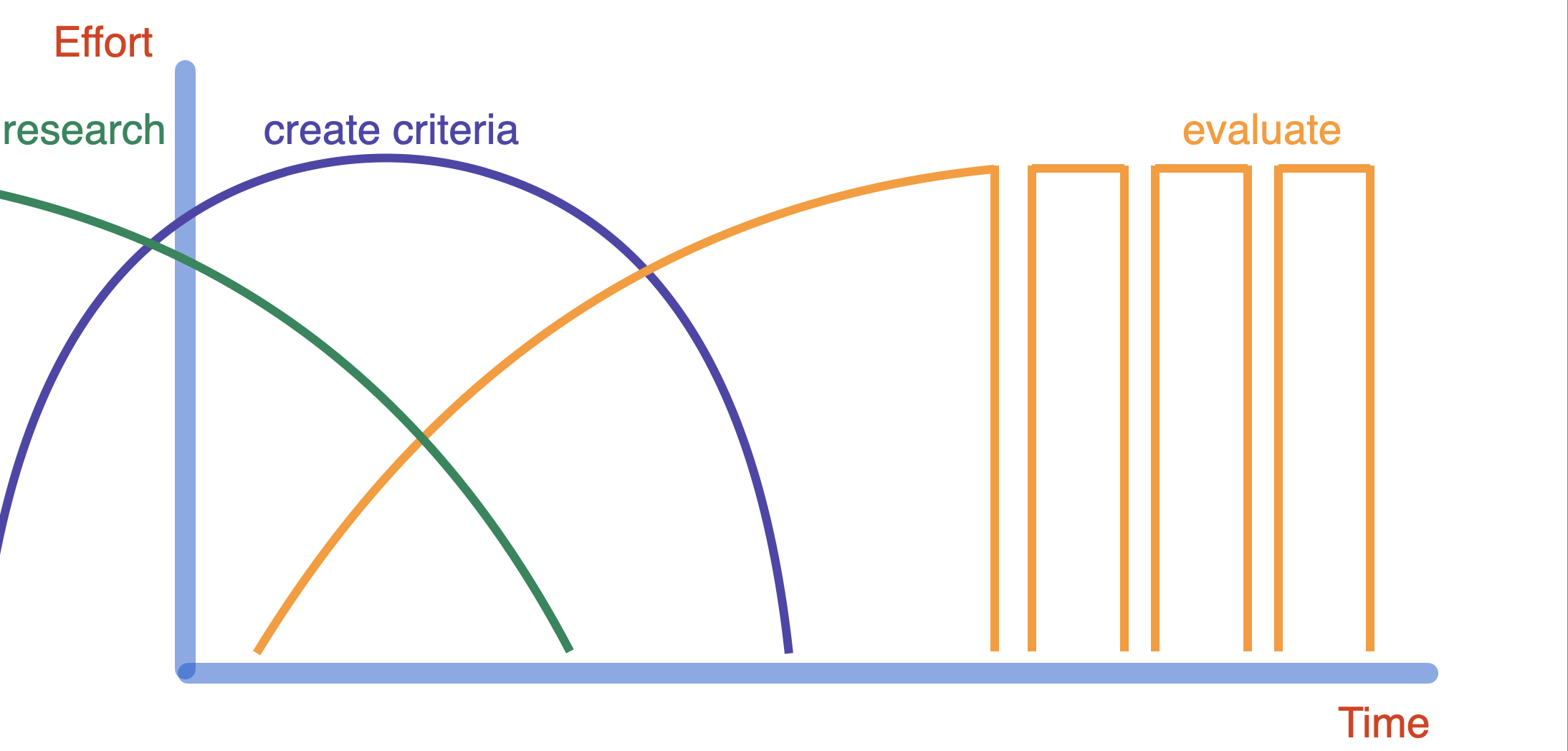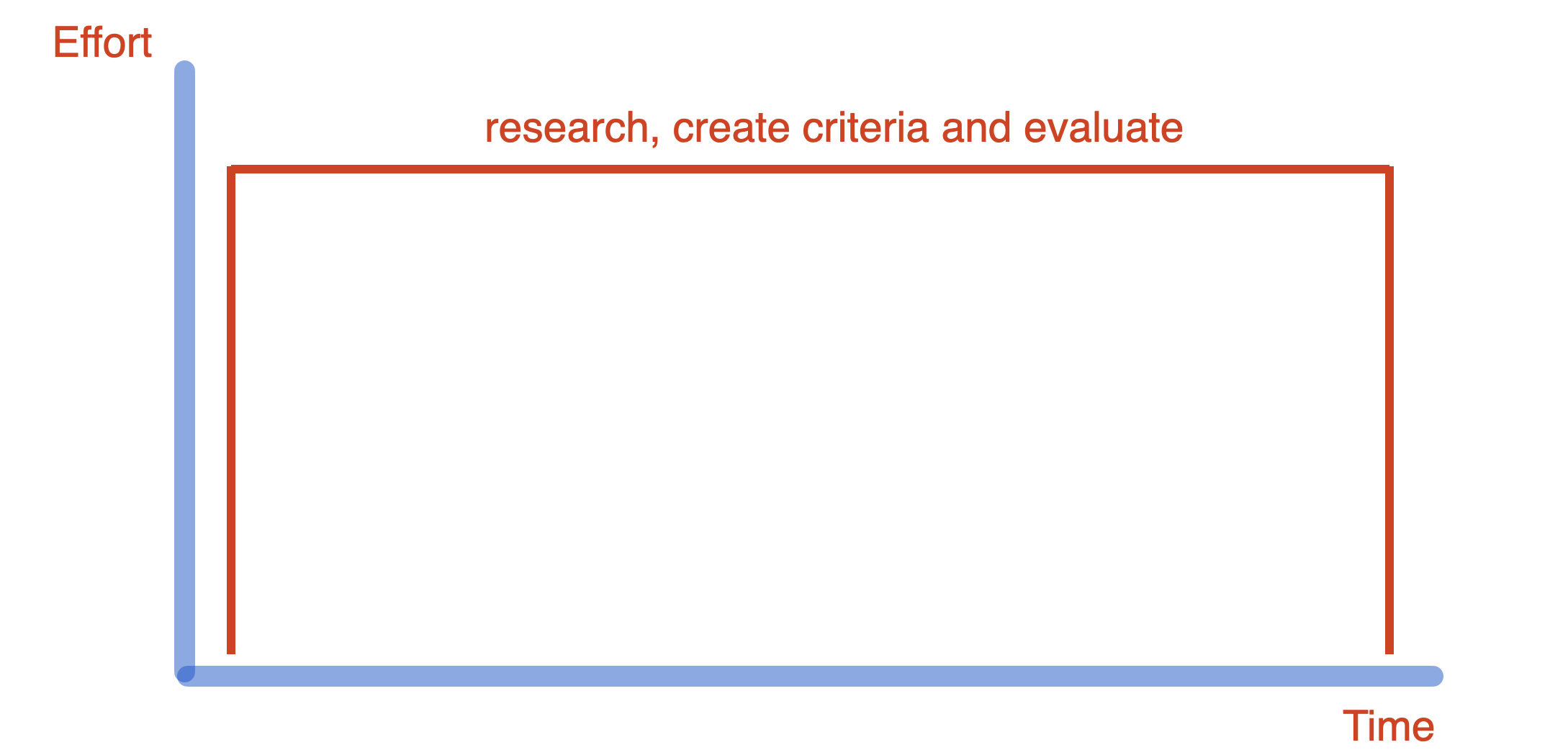How Rubrics Save Time and Effort
Introduction
Whilst it may seem that rubrics require extra committment in time and effort, this article explains how rubrics can actually save time and effort. We are going to compare approaches to evaluating a problem by looking at the activities required at each stage.
This comparison applies to many types of problems that involve evaluation, but we don't need to discuss details of the actual problem solving. If, however, you'd like an example of the type of problem the article refers to, imagine you have the task to review the OKRs that a team (perhaps your team) has defined. How would you evaluate how well the OKRs have been defined?
Working without Rubrics
We start by evaluating the problem in an unstructured way and use this as the baseline for the other techniques.
The unstructred approach involves blending the following activities:
- Research: For many problems, you'll have to read up to ensure you know the problem domain well enough to perform the evaluation.
- Create criteria: You can't evaluate something if you don't have criteria. This activity involves the formation of criteria.
- Evaluate: This activity involves turning your analysis into an assessment.
This approach is represented by the figure at the right. The area within the box can be considered as the total work done to evaluate the problem.
Defining a Rubric

Now let's say you're given the same problem, but this time choose to define a rubric to evaluate it. You would still have to perform the same tasks of researching the problem domain, forming evaluation criteria and then performing the evaluation. However, the creation of a rubric forces more of the research and criteria creation activities to be performed earlier in separate activities.
The figure at the right shows the result of these activities becoming more explicit. The diagram illustrates a certain amount of overlap which allows for a more iterative approach and feedback from one activity into another. There are various benefits of this approach such as the establishment of clearer criteria, however, the overall amount of work required will be similar to the first approach where all the activities are carried out concurrently.
If you're interested in seeing what the rubric might look like, you may like to visit the OKR writing guide rubric.
A Second Evaluation

Now let's say, the problem involve making multiple evaluations. Going back to the OKR review example, let's say the team defined two OKRs and they both need to be reviewed before settling on them as your team goals. The effort involved in establishing the rubric now starts paying off. As illustrated in the diagram to the right, the first evaluation will involve iteration and feedback into the establishment of the rubric, but once the rubric has solidified, subsequent evaluations require no more research nor modification of the evaluation criteria.
The scoring guidance within the rubric helps untangle each problem presented to result in fast evaluations. In the case of the OKR example, it typically only takes a few minutes to assess an OKR against the OKR writing guide rubric.
Multiple Evaluations

The time saving benefits of rubrics pays off even more when many evaluations are performed against the same rubric. When this is the case, any extra effort spent on the quality of the rubric is easily justified. For example, providing extra scoring guidance by way of example behaviors makes a big difference to the ease with which evaluations can be completed.
There are many examples where a rubric can be used over and over again such as:
- Interviewing job candidates
- Competitive analysis
- Evaluating a startup business
- ...
Summary
Apart from other benefits such as the establishment of clearer evaluation criteria and the ability to share this criteria, rubrics can also save time and effort. Why not try this approach and see for yourself?
You may also like some of our other posts...
- Retiring Jira and Confluence apps
- Sharing rubrics and assessments
- Unified Rubric
- Defining OKRs - Best Practices
- Notes app for monday.com
- Help for the Roobrick app for monday.com
- A Better Way of Working
- Roobrick app for monday.com
- Markdown in Rubrics and Assessments
- Better Decision Making
- Single Point Rubrics Over Analytic Rubrics
- Craft Pack
- Rubrics in Business
- Making Robust Decisions
- Understanding Roobrick
